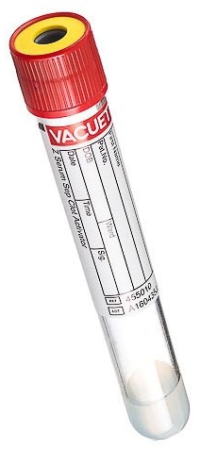
Test Code: 4021
CPT Code(s): 82670
Methodology: Immunoassay (IA)
Clinical Significance: Measuring the circulating levels of estradiol is important for assessing the ovarian function and monitoring follicular development for assisted reproduction protocols. Estradiol plays an essential role throughout the human menstrual cycle. Elevated estradiol levels in females may also result from primary or secondary ovarian hyperfunction. Very high estradiol levels are found during the induction of ovulation for assisted reproduction therapy or in pregnancy. Decreased estradiol levels in females may result from either lack of ovarian synthesis (primary ovarian hypofunction and menopause) or a lesion in the hypothalamus-pituitary axis (secondary ovarian hypofunction). Elevated estradiol levels in males may be due to increased aromatization of androgens, resulting in gynecomastia.
Alternative Name(s): 17-Beta-Estradiol; E2; E2 IVR; Estradiol (E2-6 III); Estradiol Level; Estradiol 17 Beta; IVR Estradiol
Supply: #T157 Red/Yellow SST 8mL
Preferred Specimen: Serum
Preferred Volume: 1mL
Transport Container: Serum Separator Tube (SST)
Transport Temperature: Room Temperature
Specimen Stability: Room Temperature: 7 days
SPECIAL INSTRUCTIONS: For any patients for whom low estradiol levels are anticipated (e.g. males, pre-pubertal children, and hypogonadal/post-menopausal females), the Quest Diagnostic Nichols Institue Estradiol, Ultrasensitive LC/MS/MS Assay is recommended (order code 30289).
Note: DO NOT add on estradiol testing to a barrier gel specimen older than 72 hours. Estradiol binds to barrier gel causing decreased values.
Rejection Criteria:
- Hemolysis
- What are hemolyzed specimens?
- Hemolysis occurs when the red cells are damaged during sample collection causing them to rupture. Hemolyzed serum or plasma is pale pink to red rather than the normal clear straw or pale-yellow color.
- What causes a specimen to be hemolyzed?
- Mixing tubes too vigorously
- Placing tubes in the refrigerator without allowing 30 minutes at room temperature for complete clotting
- Exposure to heat or in a refrigerator that is too cold
- Using a needle with too small of a bore necessary for the venipuncture
- Using too large a tube when using a butterfly needle
- Not allowing sufficient time for alcohol to dry on puncture site
- Leaving the tourniquet on for longer than one minute
- How can hemolyzed specimens be prevented?
- For routine collections, use a 20–22-gauge needle
- Do not remove the needle from the vein with the vacuum tube engaged
- Do not collect a specimen in a hematoma
- Do not centrifuge the specimen for a prolonged period of time
- Draw the sample gently and evenly
- What are hemolyzed specimens?
- Specimens exceeding stability
- Specimens other than serum
- Unlabeled or improperly labeled specimens
- Serum stored on barrier gel for more than 72 hours
For additional supply or collection device information, please contact DLO's Customer Service at (800) 891-2917, option 2.
The CPT codes provided are based on AMA guidelines and are for informational purposes only. CPT coding is the sole responsibility of the billing party. Please direct any questions regarding coding to the Payor being billed.
